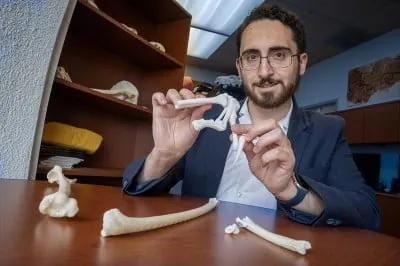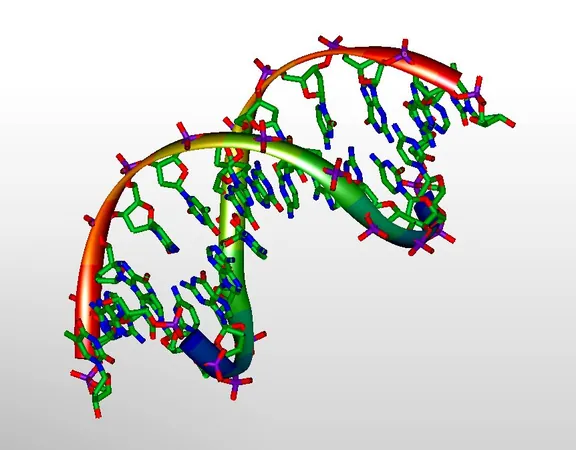
Wrist Wonders: How a Dinosaur Carpal Bone is Reshaping Our Understanding of Flight Evolution
2025-07-10
Author: Olivia
A Groundbreaking Discovery in Dinosaur Evolution
In a thrilling revelation from Stony Brook University, researchers have uncovered a critical carpal bone in the wrists of theropod dinosaurs that may revolutionize our understanding of how flight evolved. Led by Dr. James Napoli, this team of paleontologists has identified the presence of a pisiform bone, previously thought to be exclusive to birds, in two dinosaur fossils. This groundbreaking finding, published in the esteemed journal Nature, suggests that the evolution of flight may hinge on intricate wrist developments.
Unraveling the Mystery of the Pisiform Bone
For years, scientists grappled with the identity of a carpal bone found in birds. Research has now confirmed that this bone is indeed the pisiform, a structure that allows birds to efficiently fold their wings during flight. Interestingly, the pisiform evolved from a sesamoid bone—a type of bone similar to a kneecap—migrating to its current position, where it plays a vital role in stabilizing wing movements. The unique V-shaped notch in this bone enables birds to clasp their hand bones, preventing dislocation while soaring through the skies.
The Dinosaurs Behind the Discovery
The fossils scrutinized by Napoli’s team belonged to two intriguing theropods: a troodontid, closely related to the fearsome Velociraptor, and an oviraptorid, a peculiar bird-like omnivore sporting a long neck and toothless beak. Exceptional preservation of these fossils, coupled with advanced high-resolution CT scanning technology, allowed researchers to isolate and study the wrist bones in remarkable detail.
Evolutionary Insights and Future Research
Napoli noted the significance of this discovery, stating, "This is the first time a migrated pisiform has been identified in a non-bird, carnivorous dinosaur." He emphasizes the potential implications of their findings, suggesting that the practice of flight may only have emerged in dinosaurs after the pisiform migrated. This introduces the possibility that traits found in modern birds were established much earlier in the evolutionary timeline.
Contextualizing the Evolution of Flight in Dinosaurs
The team's research places the migration of the pisiform not within the lineage of birds but at the origins of a group called Pennaraptora. This group includes dromaeosaurids, troodontids, and oviraptorosaurs—lineages where bird-like features began to emerge and flight may have evolved multiple times. Napoli and his co-authors argue that the transition of the pisiform deeper in theropod history was a stepwise process, further complicating our understanding of evolution in these remarkable creatures.
The Road Ahead: More Questions Than Answers
While this research is a leap forward, many questions remain. How many times did dinosaurs experiment with flight? Did the evolution of the wrist directly influence their ability to take to the air? As Napoli points out, these hypotheses demand further investigation to unlock the mysteries of dinosaur evolution and pave the way for a better understanding of how birds came to rule the skies.









 Brasil (PT)
Brasil (PT)
 Canada (EN)
Canada (EN)
 Chile (ES)
Chile (ES)
 Česko (CS)
Česko (CS)
 대한민국 (KO)
대한민국 (KO)
 España (ES)
España (ES)
 France (FR)
France (FR)
 Hong Kong (EN)
Hong Kong (EN)
 Italia (IT)
Italia (IT)
 日本 (JA)
日本 (JA)
 Magyarország (HU)
Magyarország (HU)
 Norge (NO)
Norge (NO)
 Polska (PL)
Polska (PL)
 Schweiz (DE)
Schweiz (DE)
 Singapore (EN)
Singapore (EN)
 Sverige (SV)
Sverige (SV)
 Suomi (FI)
Suomi (FI)
 Türkiye (TR)
Türkiye (TR)
 الإمارات العربية المتحدة (AR)
الإمارات العربية المتحدة (AR)